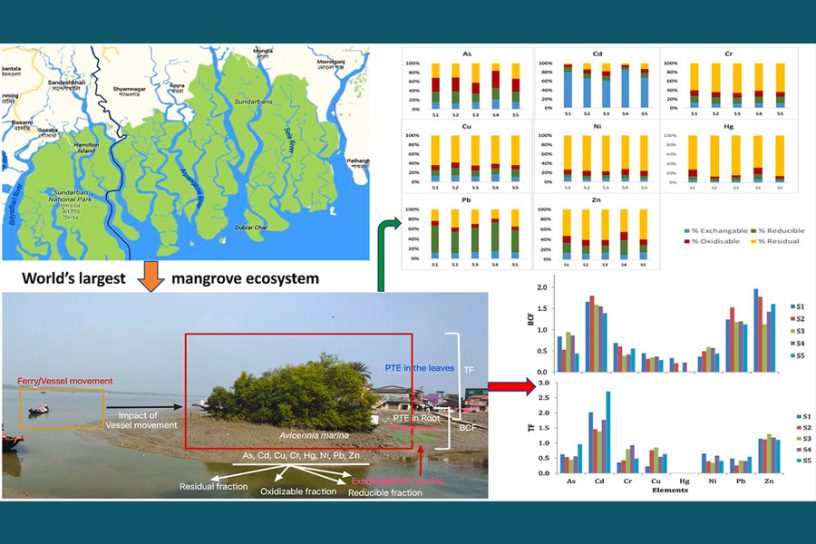
This study shed light on the role played by ferry movement in the speciation, ecological impact and bioaccumulation of potentially toxic elements in plant tissues of grey mangrove found near the five ferry ghats.
Authors
Abhiroop Chowdhury, Professor, Jindal School of Environment and Sustainability, O.P. Jindal Global University, Sonipat, Haryana, India; Department of Environmental Science and Engineering, Indian Institute of Technology (Indian School of Mines), Dhanbad, Jharkhand, India.
Aliya Naz, Assistant Professor, Jindal School of Liberal Arts and Humanities, O.P. Jindal Global University, Sonipat, Haryana, India; Department of Environmental Science and Engineering, Indian Institute of Technology (Indian School of Mines), Dhanbad, Jharkhand, India.
Subodh Kumar Maiti, Professor, Department of Environmental Science and Engineering, Indian Institute of Technology (Indian School of Mines), Dhanbad, Jharkhand, India.
Summary
Sundarban is the world’s largest mangrove wetland and home of 4.6 million people (Indian part), whose principal mode of communication is motorized boats (ferries). This study shed light on the role played by ferry movement in the speciation (following the BCR three-step sequential extraction method), ecological impact and bioaccumulation of potentially toxic elements (PTEs) in plant tissues (root and lamina) of grey mangrove (Avicennia marina) found near the five ferry ghats (ports).
One-way ANOVA showed variation in major soil parameters (silt, clay, organic carbon, pH, Electrical conductivity) and PTEs (As, Cd, Cr, Cu, Hg, and Pb) between sites. Sequential extraction revealed that Cd was present in the ‘exchangeable’ form across the sites, Pb was in the ‘reducible’ form, and the rest of the PTEs were majorly found in ‘residual’ phase. Pollution indices revealed moderate to heavy contamination and considerable potential ecological risk due to Cd.
Pearson correlation statistics and concentration variations indicate a relation between Pb and ferry movement frequency in the sites. Higher bioconcentration of Pb in the roots of A. marina, indicates phytostabilization action. Translocation factor for Cd in the leaves, indicates phytoextraction by A. marina.
Principal component analysis (PCA) and hierarchical cluster analysis (HCA) showed a close association between vehicle movement and Hg, Pb, Silt fraction, electrical conductivity, Cr, and As. This study recommends regular pollution monitoring across Sundarbans, as the PTEs in sediment-plant matrix can impact the higher trophic levels, human health through possible biomagnification in the detritus food chain, and can adversely impact the existing conservation initiatives.
Published in: Marine Environmental Research
To read the full article, please click here.


